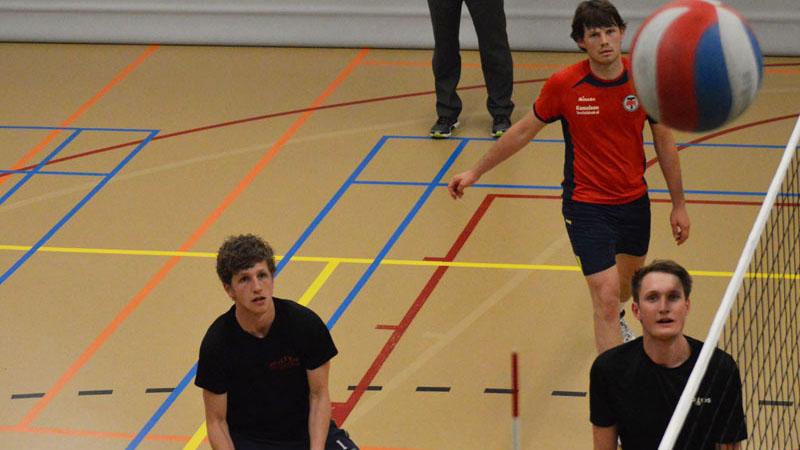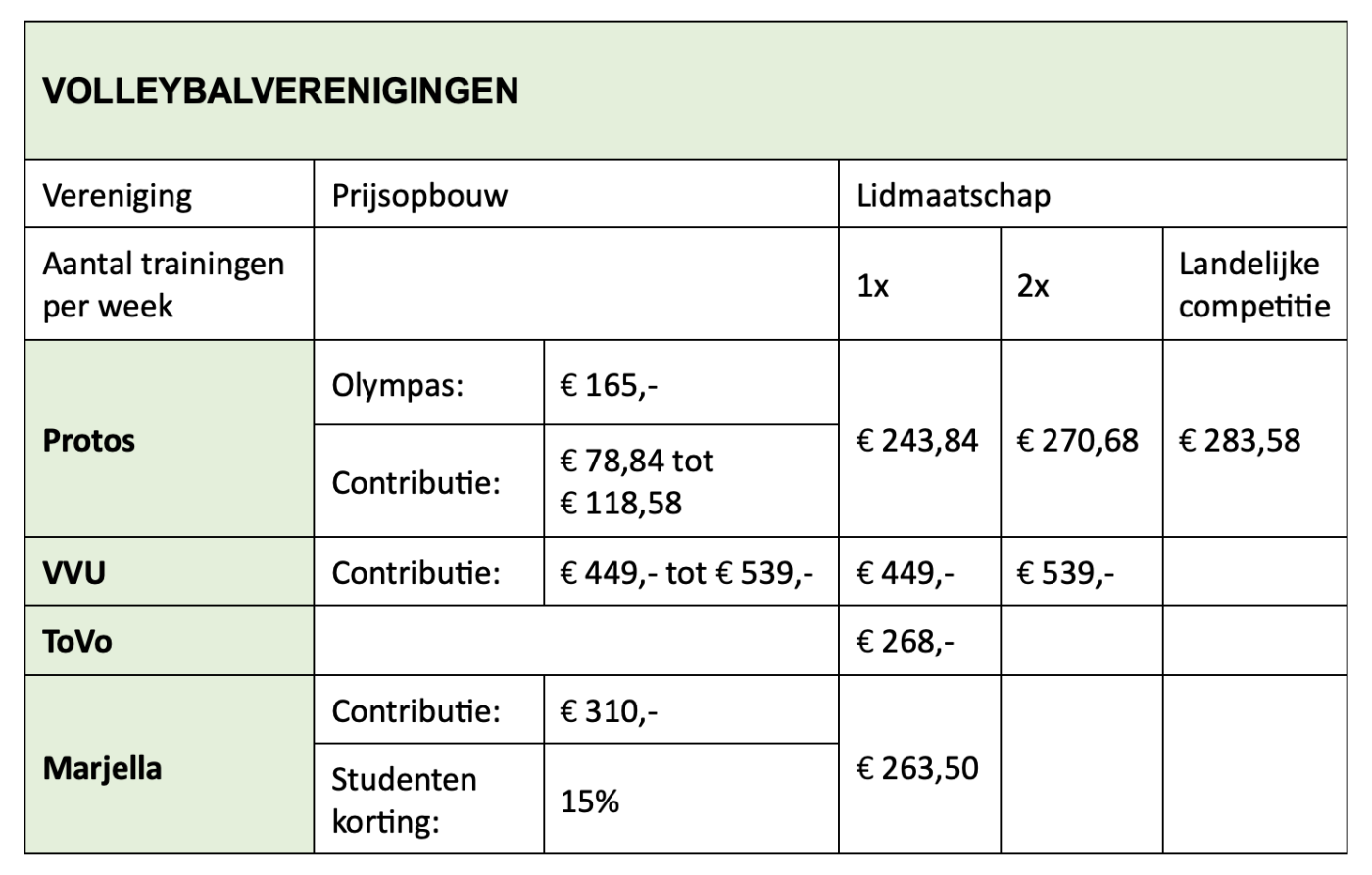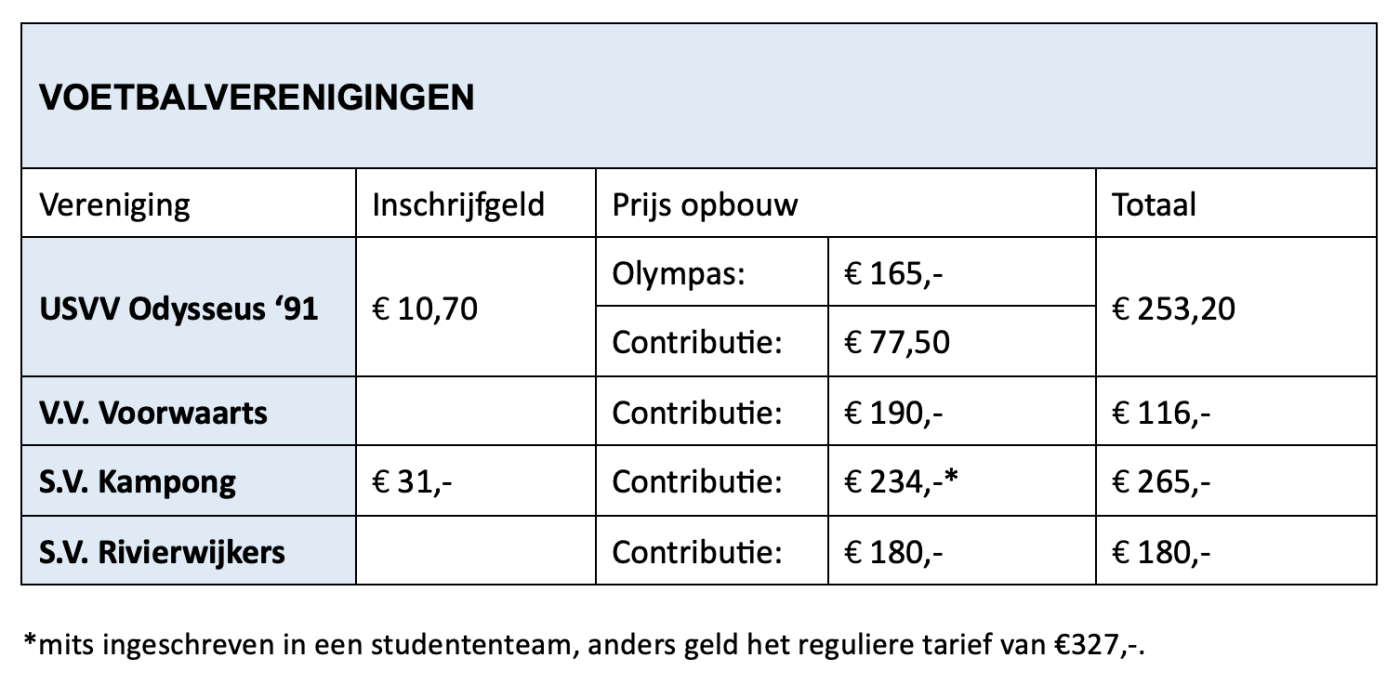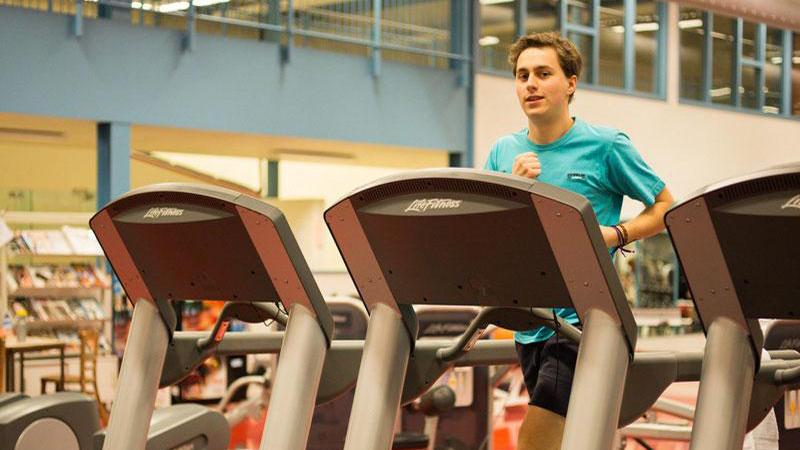Student sports has been temporarily saved
‘If they take away funding for sports, we will have to close our doors’

“Fortunately, the pressure has eased somewhat. We are glad that the minister said that funding for student sports will be tolerated for the time being. But we are not there yet. We must keep an eye on this matter,” says Cees Verhoef, director of Olympos Student Sports Centre.
The past few weeks have been nerve-racking for him. First, the minister of education announced that universities and universities of applied sciences should not be allowed to spend money on non-academic activities, such as sports and culture. In the minister's view, universities that do that are making an improper use of public funds. He also believes that the funds allocated by the Ministry of Education should not distort the private market, so students should pay a “market-based” price to use sports facilities.
The announcement was met with criticism, and Minister Bruins ultimately made a U-turn, saying that he will not enforce the decision for the time being. The current situation will therefore be tolerated. However, the idea to ban funding for student sports is not off the table.
According to Verhoef, it would be disastrous if the plans went ahead. "If they take away funding from the university and the university of applied sciences, Olympos will have to close its doors for sure. Without this funding, an Olympos pass could cost students 500 euros a year." Currently, an all-inclusive sports pass costs 165 euros. The pass is required of all members of student sports associations (SSV) and gives students unlimited access to 70 sports offered by Olympos. “If all athletes stay with us, the lack of university funding will not be a problem, but everyone knows that's not going to happen. Some athletes will go elsewhere to exercise, and some will quit altogether.’
This was evidenced by a survey of athletes at USC, Amsterdam's student multi-sports centre. Over 50 percent of the 1,403 respondents indicated that they would exercise less without the student sports centre, 37 percent said they would stop practising sports altogether, and 11 percent would continue to practice sports just as often, but they would go somewhere else.
Ruerd Kroon (23), a Science & Business student who is chairing the Utrecht Sports Council this year, believes that this outcome would also apply to Utrecht. "Students don't have much money to spend, and their equipment is often borrowed. If their finances are put under even more pressure, sports will definitely not be a priority for them."

Price difference
Suppose students can no longer exercise at Olympos and must look for alternatives outside the university. How much more would they spend to continue exercising? That's not easy to say. After all, Olympos offers several types of sports and is home to many student sports clubs. Thanks to this free sports programme, they can sign up for courses and make free use of the fitness facilities and the squash and tennis courts. Anyone who becomes a member of a student sports club must have an Olympos pass, which enables them to not only play sports at their own club, but also play freely.
If you compare the current costs between the student volleyball club Protos and some regular clubs, the price differences are not significant. Only VVU is a bit more expensive, but that is because they have a women's team in the Premier League. This makes the membership fee for all members significantly more expensive.
Ruerd: ‘Our research has shown that the hall rental costs for clubs at Olympos are comparable to those of regular clubs. So that's not where the price difference lies. It's reflected in the choices that clubs make, such as volunteer allowances and the trainers they appoint.’
Protos members therefore pay a market-based price, but the Olympas allows them to practice other sports too, or do some additional training at the gym.


Football at Odysseus
The picture is different at the student football club. Playing football at the Odysseus student association is a bit on the expensive side compared to football clubs such as Voorwaarts and Rivierwijkers. ‘This is partly because Odysseus organises more social activities, such as weekend trips,’ says Ruerd. Kampong, on the other hand, has a more comparable price, but also has fitness facilities.

Municipal support
Verhoef explains that regular sports clubs have comparable prices to student sports clubs because they also receive subsidies. "A sports field costs around 60,000 euros a year, of which a club pays only 14,000 euros. The rest is paid by the municipality. For indoor sports clubs, the subsidy for the halls is about half the cost price."
In Olympos' case, the total subsidy from higher education amounts to about 41 percent. "If the municipality also contributes to sports clubs, why shouldn't the university be allowed to do so?" If higher education is no longer allowed to finance sports, Olympos may also be eligible for municipal subsidies. "In that case, we have no problem keeping the door open. Sports at Olympos could even become cheaper!"
But this would mean the municipality would have to dig deep into its pockets, significantly increasing the sports budget. "So, the university is sparing the municipality, in a way," concludes Verhoef. According to a recent article published by AD Utrechts Nieuwsblad, the municipality of Utrecht currently spends 137 euros per resident on sports. Student sports receive nothing at all.
In addition, Verhoef believes that the choice of a club should not be based on the price of the membership fee, but rather on the target group, such as students. "That way, you get a real club feeling. If there were only one club, you would only be able to play in internal competitions. So they need each other."

Other sports
If you look at the figures for free sports, Olympos seems cheaper than commercial gyms at first glance. A year's membership at a gym such as BasicFit costs 324.87 euros per year (excluding the 19.99 registration fee), and at SportCity, the budget membership costs 285.87 euros. So, students are better off at Olympos, which makes sense to Verhoef. 'Those gyms are profit-oriented, Olympos is not.’
But the most important difference, according to Verhoef, is that Olympos serves a completely different function than commercial providers. "Fitness is only a small part of what we do here. We offer many different sports at an all-inclusive price so that everyone can discover which sport suits them best. And we want to make it affordable for a specific target group with a limited budget. That doesn't work at a commercial institution. A student who only goes to the gym is cheaper than an SSV member who practices another sport in addition to exercising at the club. We are now using that difference to make more expensive sports affordable as well. That would no longer be possible in the future."
Social function
One possible way to keep Olympos going without higher education subsidies is to slim down considerably, turning it into something akin to commercial gyms. "We would have to stop renting expensive fields, which means we would no longer have a place for student sports clubs." This would cause Olympos to lose its social function and put more pressure on regular clubs. Those additional costs would then be passed on to the government.
Not exercising is more expensive
"Exercise also has a major preventive effect," says Verhoef, referring to a white paper published by Studentensport Nederland showing that sports have a positive influence on health. It has the greatest impact on young people up to the age of 23, reducing the risk of cardiovascular disease, cancer, diabetes and obesity. It also has mental benefits. Athletes have more self-confidence and a better sense of self-esteem. There is also evidence that it improves concentration, which comes in handy for students.
Encouraging the practice of sports is therefore good for students' wellbeing and saves money in healthcare. For this reason, both Verhoef and Ruerd would consider it foolish if the minister were to go ahead with his plans. "Continuing to subsidise student sports has nothing but advantages."